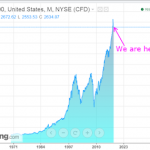Sales of existing homes soared in November 2017, according to the National Association of Realtors (NAR). Up 5.6% in just the one month, at 5.81mm (SAAR) homes sold that’s the highest pace for resales since December 2006. After several months of glaring weakness, either a delayed rebound from hurricane disrupted activity or a burst of renewed optimism has gripped the real estate market (I’d bet the former given the timing).

The breakdown of home sales by price last month shows a dramatic reversal from 2017’s persistent skew toward activity only at the upper ends. The NAR reports that sales in the all-important mid-range absolutely spiked. In the $100k to $250k tier, activity was up 42% year-over-year; in the next higher stage, houses priced $250k to $500k, there were 34% more completed transactions this November than last.

These results actually raise more questions than provide answers. They’re the kind of distortions typically reserved for anomalous conditions, or statistical problems in the data series. For almost all November’s big jump to be channeled only into the middle leaves too much to suspicion, particularly given how the upper ends of the housing market have been where the vast majority of growth has been derived for several years running.
Despite these numbers, overall that was still the case last month at least on the inventory side. First-time buyers continue to be absent from the market, in one part because there isn’t nearly enough available-for-sale inventory on offer. Even the NAR has been forced to acknowledge the glaring discrepancy:
As evidenced by a subdued level of first-time buyers and increased share of cash buyers, move-up buyers with considerable down payments and those with cash made up a bulk of the sales activity last month. The odds of closing on a home are much better at the upper end of the market, where inventory conditions continue to be markedly better.
















Leave A Comment